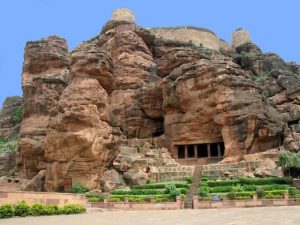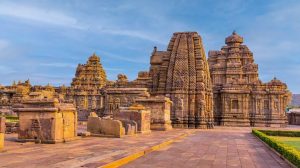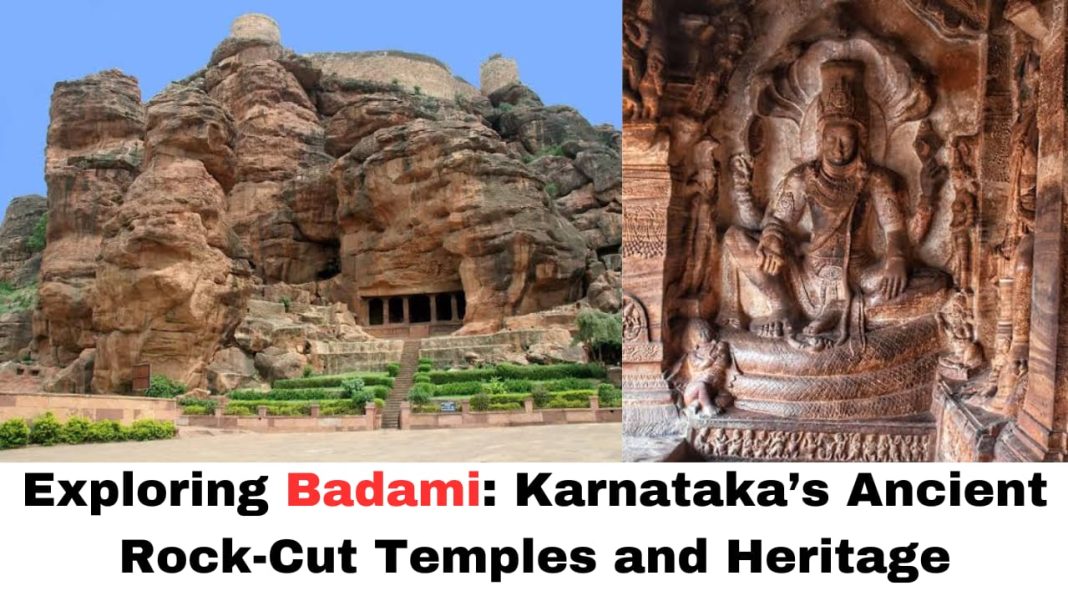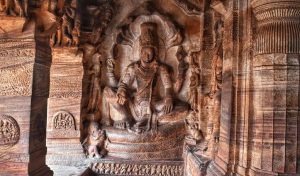Digital News Guru Karnataka Desk:
Located in the northern part of Karnataka, Badami is an ancient town known for its historical significance, stunning architecture, and unique natural beauty. Situated at the confluence of the Malaprabha and Bhima rivers, Badami served as the capital of the Chalukya dynasty during the 6th and 7th centuries and has since become one of Karnataka’s most important heritage sites. Known for its rock-cut temples, intricate carvings, and scenic landscapes, Badami is a key destination for history enthusiasts, archaeologists, and travelers alike.
Historical Significance of Badami
Badami, once known as Vatapi, was the capital of the Chalukya dynasty during the reign of King Pulakeshin I, who established it as the kingdom’s center of power in the 6th century. The Chalukyas ruled over much of southern and central India, and Badami flourished as an intellectual, cultural, and political hub. The town’s rich history is deeply intertwined with the rise of the Chalukya dynasty, as it witnessed the construction of numerous temples and monuments that would go on to shape the architectural landscape of southern India.

Badami was also a key strategic location due to its geographical position between the Deccan Plateau and the western coast of India. Its fortified walls and strategic layout were designed to protect the city and control access to the interior of the Deccan region. The town’s cultural and historical significance continued to grow, even after the Chalukya dynasty moved its capital to other locations like Aihole and Pattadakal.
Architectural Marvels of Badami
Badami is best known for its rock-cut temples, which are considered masterpieces of early Indian architecture. Carved into sandstone cliffs, these temples represent an excellent blend of Dravidian and Nagara architectural styles. The temples of Badami are primarily dedicated to Hindu deities, but there are also elements of Jain influence in the region, showcasing religious pluralism during the Chalukyan period.
- Badami Cave Temples: The crown jewel of Badami’s architectural heritage is the group of four cave temples, which were carved into the cliffs of the surrounding hills. These temples are some of the earliest and most important examples of rock-cut architecture in India. The caves are dedicated to different deities, and each one presents a unique set of sculptures and carvings.
- Cave 1 (Dedicated to Shiva): The first cave temple is dedicated to Lord Shiva and is considered the most ornate of the four. It features impressive reliefs of Lord Shiva in various forms, such as Nataraja (the Lord of Dance) and Ardhanarishvara (a composite form of Shiva and Parvati). The carvings in this cave showcase the rich artistic traditions of the Chalukyas.
- Cave 2 (Dedicated to Vishnu): This cave temple is dedicated to Lord Vishnu and features numerous sculptures of Vishnu in his different incarnations, such as Vamana and Trivikrama. The carvings here are detailed, with scenes from the Ramayana and Mahabharata also depicted on the walls.
- Cave 3 (Jain Temple): The third cave is distinct in that it is a Jain temple. It contains beautiful carvings of Tirthankaras (spiritual teachers in Jainism) and other Jain symbols. This cave highlights the coexistence of different religious traditions in the region during the Chalukya period.
- Cave 4 (Dedicated to Shiva and Vishnu): The fourth cave is less ornate compared to the first three, but it also features significant sculptures of Shiva and Vishnu. This cave also presents a rare combination of both deities, reflecting the syncretic religious practices of the time.
- The Bhutanatha Temples: Located near the Agastya Lake, the Bhutanatha temples are dedicated to Lord Shiva and are believed to have been built around the 7th century. These temples are known for their unique architectural style, which incorporates a blend of Dravidian and Nagara elements. The temples are set in a beautiful location, surrounded by scenic hills and overlooking the serene Agastya Lake, making them a popular spot for visitors.
- The Virupaksha Temple: The Virupaksha Temple, situated in the nearby town of Pattadakal, is one of the most famous temples built during the Chalukya dynasty. Although not technically part of Badami, this temple is often associated with the region due to its proximity and the shared architectural style. The temple is dedicated to Lord Shiva and features a blend of North and South Indian architectural styles.
The Chalukya Legacy in Badami
The Chalukyas were great patrons of art and architecture, and their legacy is clearly reflected in the monuments of Badami. The Chalukyan style of architecture, which emerged in Badami, is characterized by its innovative use of rock-cut temples, elaborately carved stone structures, and intricate sculptures. The Chalukyas were also responsible for the development of the Hindu temple as a focal point of community life, and their architectural innovations greatly influenced subsequent temple construction across southern India.
The architectural style of the Chalukyas, as seen in the temples of Badami, laid the foundation for the later development of the Deccan and Dravidian temple architecture, which would flourish during the reign of the Rashtrakutas, Yadavas, and Vijayanagara Empires.
Badami’s Role in Religion and Culture
Badami’s role as a religious and cultural center during the Chalukya period cannot be overstated. The temples in Badami were not only places of worship but also centers of art, culture, and learning. The town attracted scholars, artists, and devotees from different parts of India. The temples of Badami became symbols of the religious pluralism that existed in the region, with both Hindu and Jain influences evident in the architecture.
The inscriptions found in the temples of Badami provide valuable insights into the political, social, and religious life of the Chalukya dynasty. They reveal details about the royal patronage of temples, donations made by rulers and common people, and the cultural activities that took place in the town.
Natural Beauty and Scenic Views
In addition to its historical and architectural significance, Badami is renowned for its breathtaking natural beauty. The town is situated at the foot of a rocky hill and is surrounded by lush green landscapes, the winding Malaprabha River, and the tranquil Agastya Lake. The rock-cut temples are set against the backdrop of these natural wonders, enhancing the town’s allure and making it a perfect blend of history, architecture, and nature.
The Agastya Lake, in particular, holds religious significance. It is believed to have been created by the sage Agastya, who is said to have meditated here. The Bhutanatha temples, located near the lake, are dedicated to him and his spiritual teachings.
Badami Today
Today, Badami is a popular tourist destination and a UNESCO World Heritage Site candidate. The town continues to attract visitors for its remarkable temples, scenic beauty, and rich historical legacy. Efforts by the Archaeological Survey of India (ASI) have ensured the preservation of Badami’s temples and monuments, making it an important heritage site for future generations.

Badami also plays host to the annual Badami Utsav, a cultural festival celebrating the town’s rich traditions through music, dance, and art.
Conclusion
Badami is a living testament to the architectural brilliance and cultural heritage of the Chalukya dynasty. The town’s rock-cut temples, historic monuments, and stunning landscapes make it a must-visit destination for anyone interested in Indian history, architecture, and religion. Whether you’re a historian, an architecture enthusiast, or a traveler seeking to explore the rich cultural tapestry of Karnataka, Badami offers a unique and enriching experience that connects the past with the present in a beautiful and inspiring way.
You May Also Read: Kolkata MLA Hostel Arrests: BJP MLA Nikhil Ranjan Dey Alleges Conspiracy by TMC









